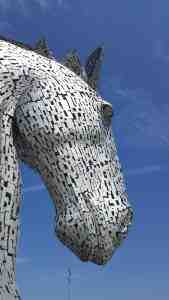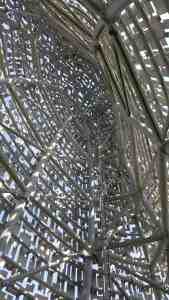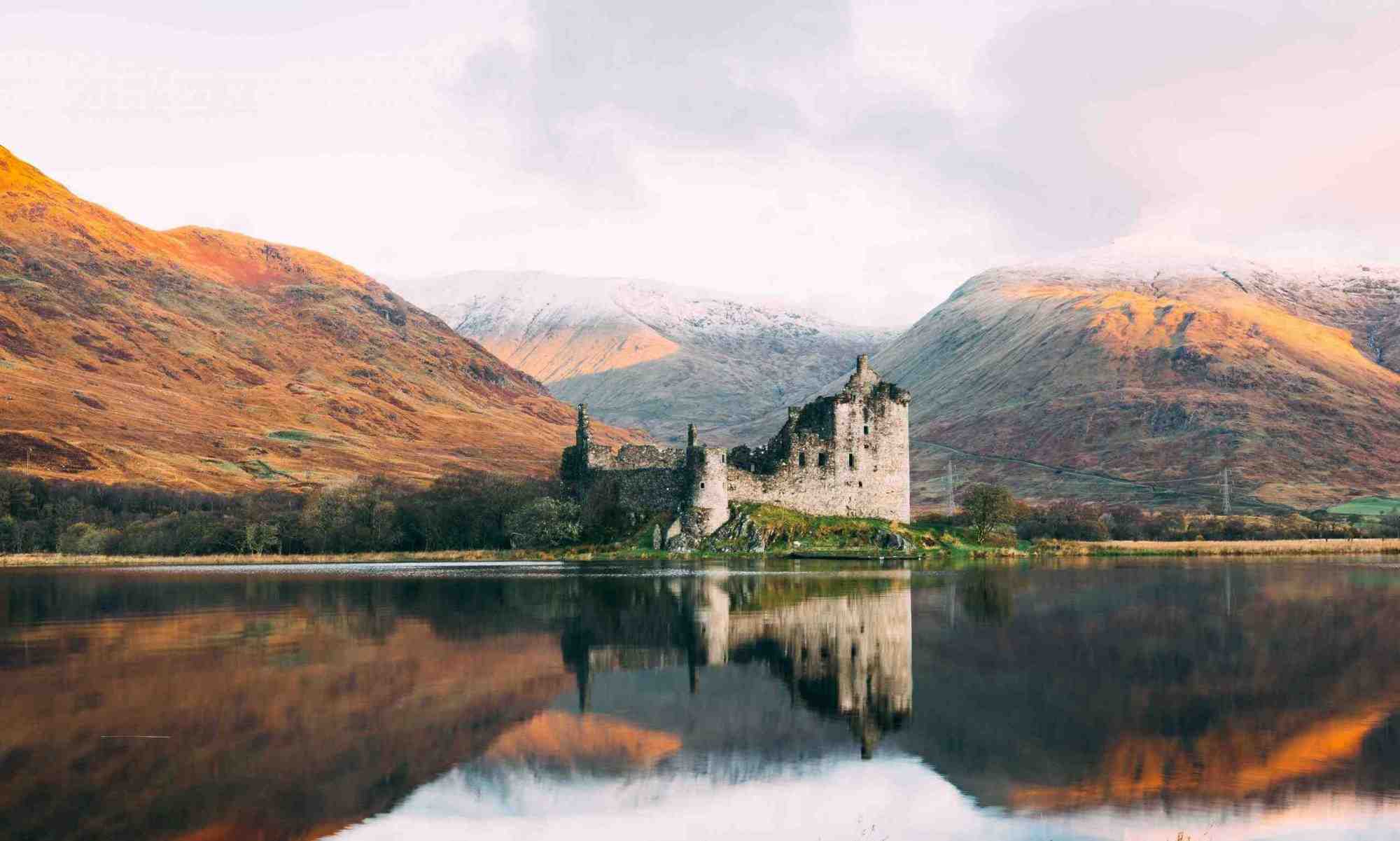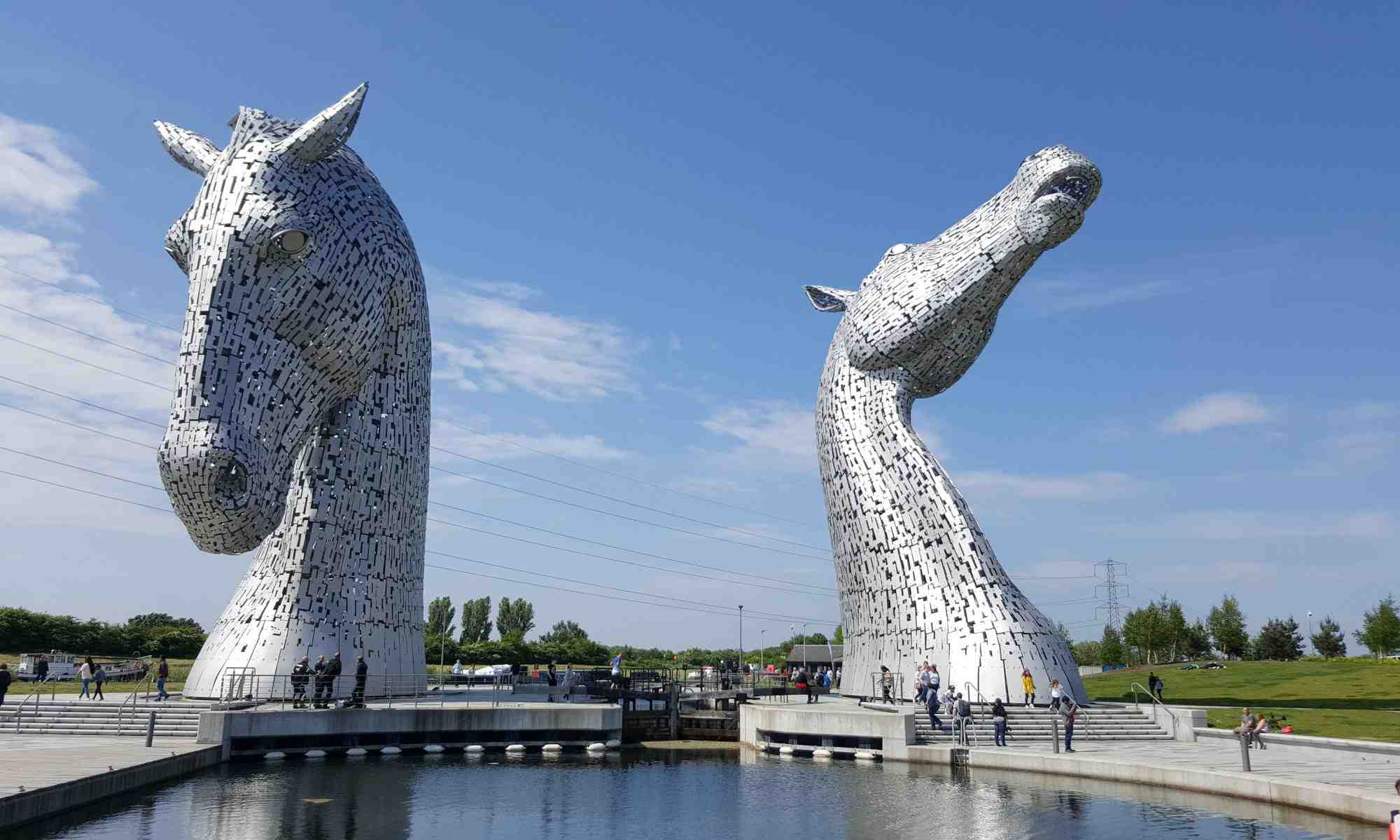The Kelpies at the Helix in Falkirk are the world’s largest equine sculpture. At 30 metres high these are situated over the Clyde & Forth Canal. Based on mythical water horse creatures known in Scotland as Kelpies and also playing homage to the Clydesdale work horses that pulled barges along the canal in years gone by. These were designed by the Glasgow based artist Andy Scott and construction was completed in 2014.
The area where the Kelpies are situated has a small visitor centre, exhibition centre and cafe. It is free to walk round the area however there are paid tours that last approximately 30 minutes that provide a tour around the Kelpies including the opportunity to go inside. With the best part being the automated doors that open to enter the Kelpies, these are very cool! Tickets cost £7.50 for anyone over the age of 16. Children under 16 go free. Our tip is that if you are going to go on the tour then do not walk round the site before the tour starts as this is part of the tour. The tour is not necessary to enjoy this area and is really down to preference.


How to get to the Kelpies?
The Kelpies are situated in Falkirk. The easiest way to visit is by car. From Edinburgh take the M9 motorway towards Stirling and exit at junction 5 for Falkirk. From Stirling take the M9 motorway towards Edinburgh and exit at junction 5. Once in Falkirk the Kelpies are well signposted. At the Kelpies there are two car parks. One on the left hand side and then another at the end of the road beside the visitor centre. This costs £3 to park your car however this is free between October and March. The car parks are not very big so can become full very quickly especially on the rare sunny days! Other options to park are near Falkirk football stadium and then to walk through the Helix park. Just make sure to check the football fixtures to make sure there is not a home game being played.
Whilst in the area it is also worth visiting Callendar house, the Antonine Wall, Dunmore Pineapple, the Boness steam Railway, Blackness Castle ( used in the TV series Outlander as the location of Fort William) and the Falkirk Wheel.


